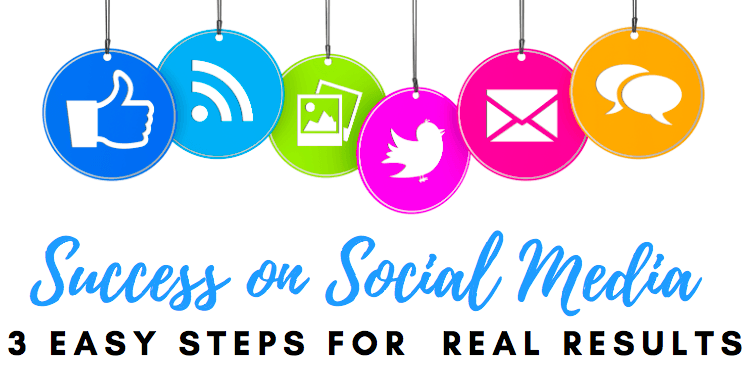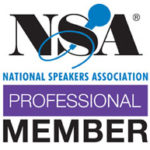Wondering if the “Open to Work” feature on LinkedIn will help you shift careers?
Will it help recruiters find you, or make you an attractive candidate?
If you’re interested in improving your profile to attract recruiters and hiring managers on LinkedIn, this episode is for you.
In This Episode of The Career Rx We’ll Discuss:
- What Open to Work is and why you could use it
- 3 downsides to enabling the Open to Work feature
- The qualities recruiters look for in passive candidates
Today, we look at the pros and cons of advertising you’re seeking a new job online. I’ll break down 3 reasons why you wouldn't use the “Open to Work” feature on LinkedIn, and point you in some better directions to express that you’re open to looking for new professional opportunities.
By the end of this episode, you’ll have a different way to think about the importance of being an attractive “passive candidate” and you’ll know what you can do actively to stand out on LinkedIn.
“The people who are sometimes the most successful and most attractive, passive candidates aren't actually being all that passive.” – Marjorie Stiegler
In this Episode:
[1:10] This question comes up a lot in my course Industry Insider
[1:33] What is “Open to Work”?
[2:30] Why this feature is even a feature
[3:10] It’s like the Bat-Signal, everyone can see it
[4:40] Optimizing your LinkedIn profile for recruiters
[5:55] Are you a passive candidate?
[7:10] Why being nonchalant might land you a new career
[8:20] Expanding your network = expanding your opportunities
[9:30] Take this step first when looking for new employment
[10:40] Keeping your LinkedIn profile update for emergencies
Links and Resources:
The Branding Rx 18 hours of CME, mastering digital strategies for advancing your career, building your business, and growing your professional brand
Episode 33 – Reinventing Yourself and Creating Your Own Luck
Episode 42 – Annual Review That Actually Advances Your Career
Episode 49 – LinkedIn Skills and Endorsements: Why They Matter
Episode 58 – Three Steps to Moving Up at Work
LISTEN TO THIS EPISODE:
SUBSCRIBE TO THE CAREER RX PODCAST:
Get every episode on your preferred player…
Apple Podcast | Google Podcast | Spotify | TuneIn + Alexa | iHeart Radio
More for you:
Book:
Courses:
The Branding Rx 18 hours of CME, mastering digital strategies for advancing your career, building your business, and growing your professional brand
The Speaking Rx learn the business of professional public speaking to establish yourself as a thought leader you are, and get paid for your speaking expertise
Industry Insider – learn exactly how to land a rewarding nonclinical career without a new degree, connections on the inside, prior experience, or a pay cut
Launch an Online Course on Any Budget – know your course will sell before you spend any time or money to create it; plus, the exact logistical blueprint to get paying customers and a way to deliver your course without spending a dime (ready to scale up when you are!)
Let’s connect!
Twitter | Instagram | Facebook | LinkedIn
Thanks for joining me on this episode of The Career Rx!
Please be sure to leave me a review on Apple and don’t forget to send me your questions so I can answer them and give you a shout out on a future episode.
TRANSCRIPT: Episode 62 – Open to Work on LinkedIn – Good or Bad?
Hey there, I'm Marjorie Stiegler and you're listening to The Career Rx Podcast, where we tackle the important things they don't teach you in medical school. Like how to treat your career, like the business it really is, with strategies to accelerate the kind of success that you want, because you deserve a career you love, and a career that loves you back. Are you ready? Let's get into it.
Hey, there, welcome back. So today, we're going to be talking about the function Open to Work on LinkedIn and whether or not you should turn this on or even utilize it in your image to sort of turn on that hashtag. And that little green ring that goes around your profile image on LinkedIn to indicate that you are open to work whether this is a good thing or a bad thing. Probably a little bit of both, right? There's always pros and cons to any decision that you take. But this is a question that has come up recently, in my course, Industry Insider, as well as in some of the Facebook groups, where I provide information to people interested in pivoting to non-clinical careers. This is a common question how to get recruiters and hiring managers and people who are otherwise in a position to help you in your career transition, how to come to their attention, particularly using LinkedIn.
And using this Open to Work feature. So let me start with the pro, you know, what's what, what would be a good reason to turn on and use the open to work feature, which if you don't know when, when you select that you like to turn on open to work, if you also choose the thing that the setting that tells LinkedIn to tell your entire network, this is when the little border for your profile picture is activated, and it shows up with that hashtag. So on the one hand, what this can do for you is it can let everybody know everyone that that you know, that connects with you on LinkedIn, to know that you're interested. And that's, you know, it has its place that can be very helpful. Because if people know that you're interested in doing something new, because either you are underemployed, or unemployed, or employed in the wrong field, then people who know you and appreciate your skills and your value, may well want to help you. And that's great.
On the flip side of that, the people who do already know you and are in your network, there are other ways to ask for their help. And there are certainly other ways to connect with your network and to boost your professional visibility even outside of your network on a professional networking site like LinkedIn. So this really begs the question, is there any downside? I would say potentially, there are three downsides. The first is perhaps the most obvious, if you are currently employed, probably your current employer is not going to like to see that you are open to work. I mean, this is a very, very strong signal, right that you are actively seeking to depart from her current employment. This generally is not well received by bosses, and maybe not even by partners and colleagues. So I'm not sure I would do that if you're currently employed, because it may cause you some professional and social friction, where you work. Now, whether or not your boss ought to be supportive of your ultimate desires to advance in your career is an entirely different topic. And I have spoken plenty on that before, I think they should be in support of it. And I think you ought to be able to have those open conversations with your boss, but I don't think it belongs on a big old badge on LinkedIn. Even if not with that badge, with some really explicit language in your headline or your summary that says that you're actively seeking new or different opportunities. So I'm going to consider all of these things really to be the same. Even if you don't use the “Open to Work” avatar. Okay, so that's one strike against using it, another strike against using it I think anyone who's searching LinkedIn for subject matter, or an employable person, subject matter expert, or someone who's otherwise employable, that fits their needs for a particular role or company. They will find you anyway, if you fit that bill. If you fit that bill, and you have your LinkedIn profile optimized, I should say, if you fit the bill and your LinkedIn profile is optimized, and therefore your employment history and your skills and your summary and your headline and all of that are well lined up to position you as an attractive candidate.
You will be found anyway by the hiring manager, by the recruiters and by anybody and everybody who's using LinkedIn as a search tool in order to identify potential candidates for the role, you do not need to have your your little frame or any language about whether you're seeking or not activated anywhere on your profile in order to be able to be found by hiring managers, and by recruiters, they are looking instead much more at specific keywords, competencies, skills, and sometimes companies, places that you currently work or have worked before roles that you currently have or have had before, they are not looking for an indication that you are open. So that's maybe strike two against turning doubt on is that I just don't think it's going to be especially helpful to raise you in their visibility.
Okay, last but not least, the third strike, I think, against turning this on for most job seekers, is that it's well known in the hiring world that a passive candidate, “passive candidate” is preferable. What does that mean? A passive candidate is a person who is currently employed most likely, and who is perceived to be adding value in their current role, and is, you know, not only employable, but they're employed, they are not only desirable, but they are desired by their current employer. And so they're referred to sometimes as passive candidates, because they aren't out there, pounding the pavement seeking jobs. But like all smart business people, they are open to the right job at the right time. And they are open to transition. But they don't need to signal that if the recruiter or the hiring manager finds you for your talents, and approaches you I mean, that's when you will signal you'll either say “Sure, I'd be happy to have an introductory conversation with you.” Or, you know, “no, please don't waste my time or you don't answer right.”
There's nothing that needs to be checked on any box or in your specific language of your profile, or certainly not in the frame for your photo, to tell people that you would be open to having a discussion about that. They're just going to reach out and try. Why is a passive candidate considered more attractive for the reasons that I just mentioned? Right? I mean, your your, your professional branding that you're leading with is that I'm currently employed in a good role with a good company doing some good work already, which is just, frankly, much more compelling than saying I'm unemployed or underemployed. I don't have what I'm looking for. I'm kind of desperate, will you hire me please? Right, that is not the look, that's not the brand image that you are intending to convey. And for the record, I don't think that's an accurate description of anyone in my audience. I also want to say that the people who are sometimes the most successful and most attractive, passive candidates aren't actually being all that passive. But what they're not doing is they're not reaching out with a resume or CV in hand, you know, which is sort of the big signal for I'd like you to give me a job. They're not asking for jobs, they're not passing out their CVS. What they are doing, however, is growing their network and engaging smartly, with digital tactics. So they're really not being passive. They're spending a lot of time curating their online presence, they're spending a lot of time growing their network, they are spending a lot of time making themselves very attractive candidates, but they're not spending a lot of time sort of deliberately seeking job opportunities.
So what if you abruptly lost your job, you were laid off, there was a reorg, some Something happened, you had to suddenly move and suddenly you're without income, you know, then Would it be okay. And I would still submit that even if you have suddenly lost your job, and you do have a very dire urgent and desperate need to get employed again, that putting that little banner up for yourself on your LinkedIn profile is not the best way to go about doing it. I think instead, you will be much better served by reaching out specifically to people that you know, and trust and just telling them your circumstances that you're abruptly unemployed, that you have an abruptly dire need, you know, and then the people that know you and want to help, you will certainly try to help you to your comfort level, you might even cast that net, wider beyond people, you know, well and trust, although realize the kind of opening yourself up there, it's a little bit vulnerable. But if you really want to tell people in hopes that somebody will help you.
I would much rather have you do that through personal communication, rather than a big public flag that says I'm unemployed or underemployed. And I'm feeling desperate because for the people who are using LinkedIn as a search tool to try to find attractive candidates, that is not likely to be very attractive. And I think that outweighs the benefit that your friends or colleagues who are scrolling through will see it and think, “Oh, I didn't realize that about my friend and colleague. I would like to help them.”
It's much better to keep that kind of thing off the sort of front facing part of your profile, and instead, try to work your network behind the scenes. Again, even if it's sudden, even if it's urgent, even if it is desperate, without putting that, that external face up.
And for those of you who don't spend much time or effort on your LinkedIn profile, even today, I would say, you should start, you should start so that you'll have a well done, optimized LinkedIn profile so that you can be an attractive candidate and opportunities will start coming to you on a regular basis, you can start doing that now even while you are very happy and very satisfied, very fulfilled in your current role in case the day ever comes when that's not the case. So that is my sort of balance for maybe the reasons why one might want to think about using that feature and some pretty compelling reasons in my view, why you might not, I hope it's helpful to you and I hope has given you a different way to think about the importance of being an attractive passive candidate, and what you can do actively to be a better passive candidate. That's all for today. Bye for now.
Before you go, please review, share and subscribe to this podcast. Your support makes all the difference and it truly helps this information reach someone who may really need it. Until next time, thanks for listening.








